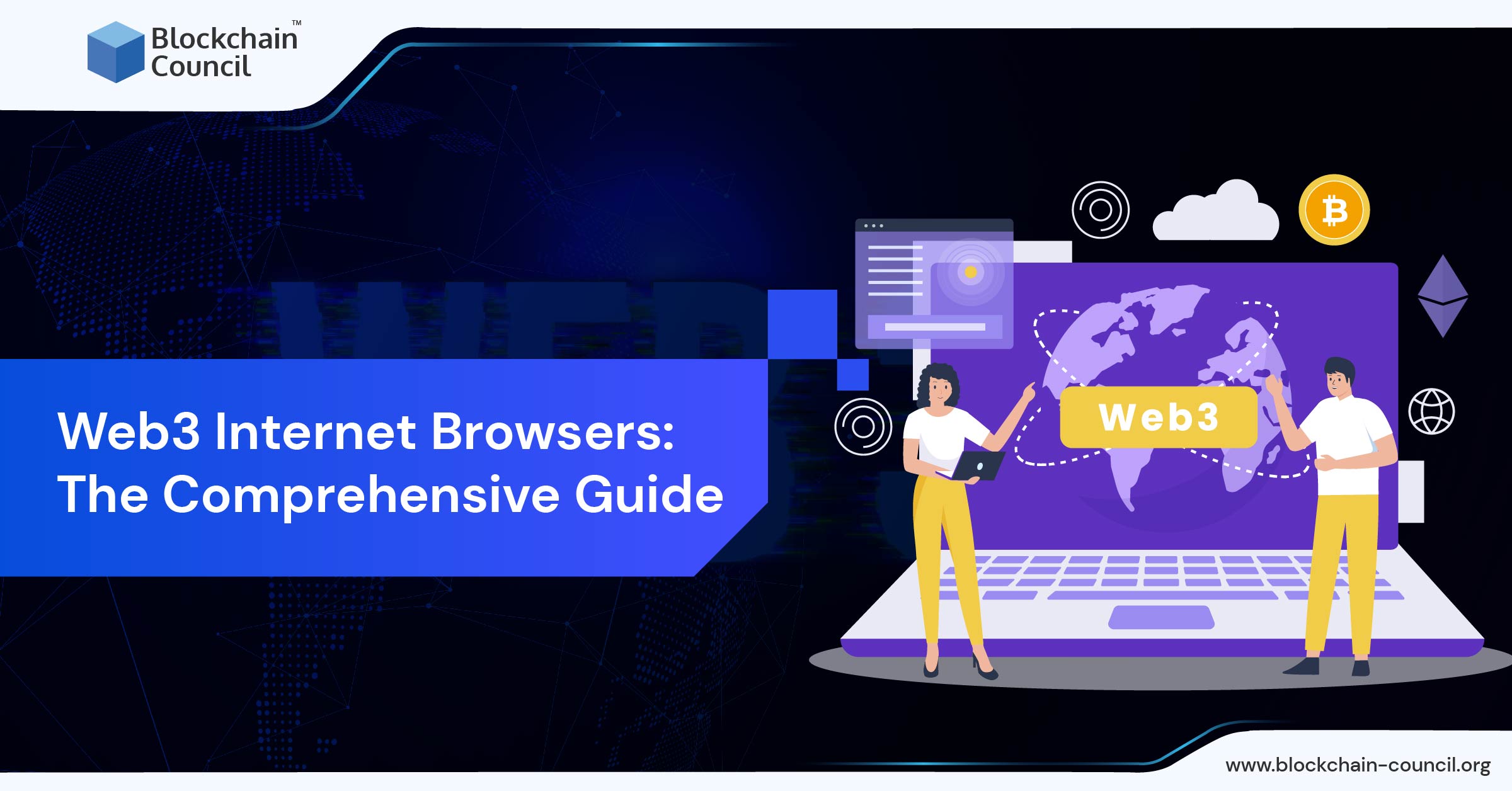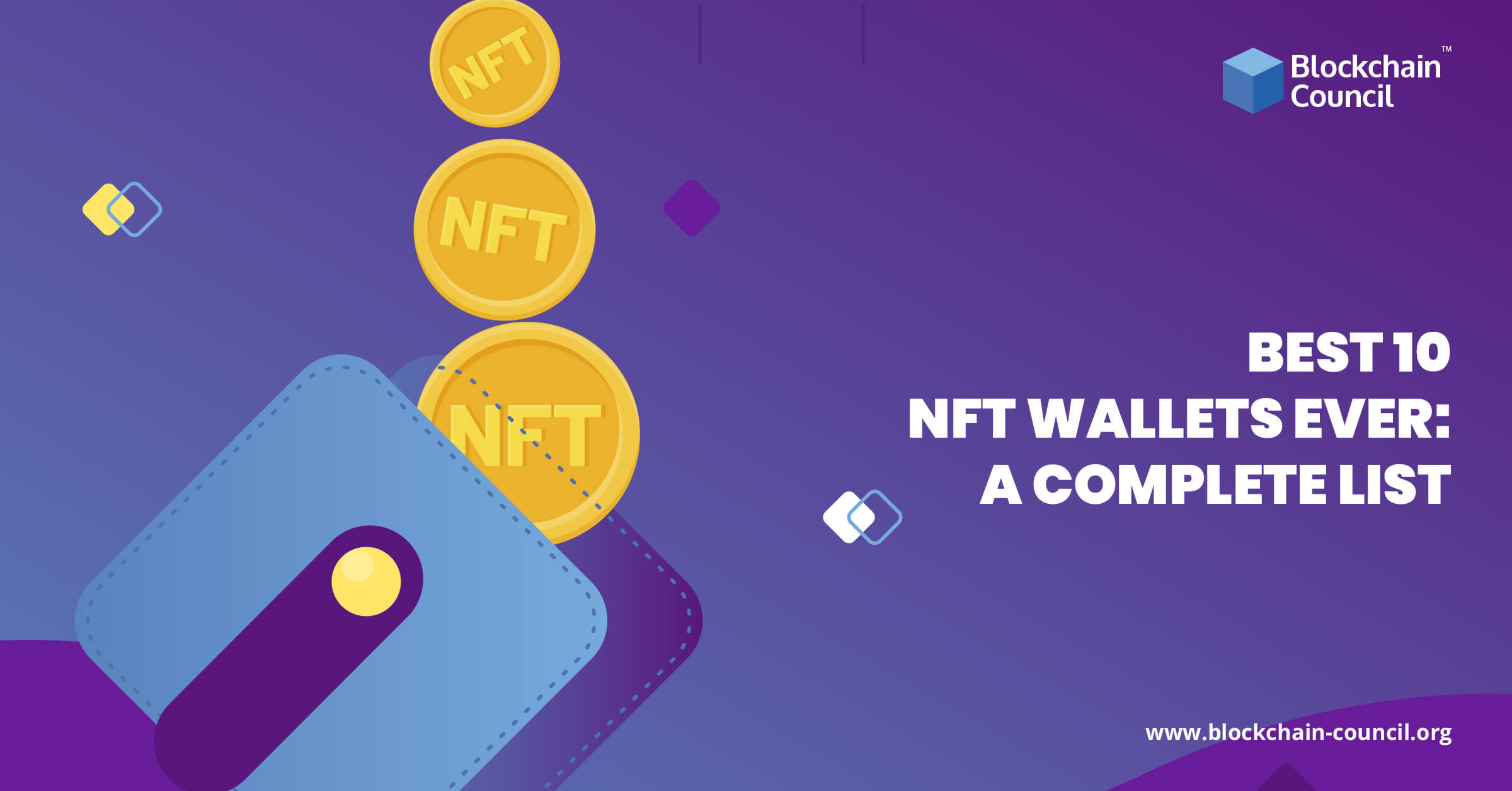
- Blockchain Council
- September 15, 2022
When did you hear the word ‘Web 3.0?’ Did you find it on one of the Internet blogs? Magazine articles or heard it from the gym partner who couldn’t stop bragging about his knowledge? There can be nth number of sources from where you might have sniffed the air about Web3 technology. The craze for Web 3.0 is so high that it is next to impossible for a person to remain aloof from the term and still co-exist with other concepts soaring within the technology realm.
With each phase of technological evolution, we found ourselves in a new paradigm characterized by an advanced Internet version. What began as a mere tool for knowledge access today shines as the strongest pillar of the global industrial and non-industrial realm. The Internet is that crucial building block on which the core technological advancement thrives and succeeds.
It was back in 2009 when the first cryptocurrency, Bitcoin, entered the financial space. The concept of paperless currency was new and so, in an apparent reaction, garnered the attention of industry experts and commoners. Though there was a lot to be amazed about Bitcoin, what took the limelight was the underlying ideology working behind it. Decentralization emerged as the new buzzword for the tech space, with firms flowing bills worth millions of dollars to venture out with innovative ideas. As the concept unlocked a new system free from any intervention from central authorities, Web3 technology strives to revolutionize the idea that we see the Internet as a resource.
Web 3.0 development can be seen as one of the most popular initiatives that sprung alongside the decentralized infrastructure. The technology talks about an Internet version that nurtures a decentralized ecosystem where users enjoy complete ownership of their content. Thriving on a blockchain channel, Web 3 represents a secured, transparent, and immutable interface where users can share ideas, trade, and grow as a community.
This article will emphasize web3 as a concept and its characteristic features. The content will also have a list of top Web3 browsers available in the market presently. Take a look:
Web 3.0: Meaning and Evolution
You cannot understand Web3 technology unless you map out the earlier versions of the Internet and how they led to the decentralized web. There have been two phases of the Internet evolution- Web 1.0 and Web 2.0. Each predecessor had its perks and limitations that paved the way for its successor. The transition from one phase to another was not something that happened overnight. The change was slow as it took time for tech enthusiasts to peel the layers lying untouched in the deeper sections of each web iteration.
-
Web 1.0
Web 1.0 is the ancestral version of the web transformation. Starting from the mid-1980s and going through the 2000s, the first version was all about information. It presented a storehouse from which users could access data on anything and everything. The centralized structure comprised a series of web pages interlinked via hyperlinks. There were no extra visuals or a section to interact with others. In this phase, the Internet users were passive gainers of the information provided by the web controllers. The read-only interface allowed users to access the data but offered no room for interaction or sharing content.
-
Web 2.0
This is the version we are currently using. It speaks about a read-and-write Internet phase. The technical shift brought in by Web 2.0 popularized the idea of social interaction. It allowed users to create, share, and present their digital content in the open source. Instead of being passive receivers, users now became active builders of the Internet. Social media platforms squeezed the world into a small circle where they got the freedom of expression and ownership. However, Web 2.0 heavily depends on a few business entities controlling the to-and-fro of Internet data. The dependence limits the scope of the web and pushes it into a less liberalized paradigm.
-
Web 3.0
Now, the shortcomings of the earlier iterations of the Internet became the catalyst for creating the Web3 version. In simple words, Web3 the decentralized phase of the web, which is free from the clutches of controlling intermediaries. The Web 3 expert community lays confidence in the potential of the technology in making the Internet more functional, safe, and transparent. The technology strives to carve out the next-gen Internet, which is open for all to use and benefit from. It focuses on shifting the power from tech giants to individual creators willing to contribute their inputs. It picturizes a decentralized, trustless, permissionless, secured, immutable, and interoperable ecosystem.
Interestingly, Web3 technology has been around us for quite some time, though we only recently poured our attention into it. Ethereum co-founder Gavin Wood first coined the term in 2014 by sharing the idea of an Internet where users get the freedom to build, use, and own their content. With the expansion of cryptocurrencies, Web 3.0 gained momentum and came into the mainstream business. The technology is in its infancy, so little can be pressed upon to its credit. There is no fixed definition for the term, but experts call it a robust infrastructure of new-age technologies. When talking about Web3, we cannot miss the core elements that support its infrastructure. One can call Web3 an interjection point that includes concepts such as:
- Blockchain Technology
- Cryptocurrencies, NFTs, etc.
- Metaverse Technology
- Artificial Intelligence and IoT
- 5G
- Cloud Computing Technologies
What are Web 3.0 Browsers?
Web 3.0 browsers help users to connect freely with the decentralized economic and non-economic spheres. The decentralized interface allows participants to browse the web like any other browser and seamlessly access DApps. Decentralized apps are designed on top of the blockchain channels and serve as the main character in a decentralized setup. They give power to the users to manage their digital data and keep the more significant part of the profit share collected from that data. Tech experts are gaining web3 training to include advanced features into web3 browsers, making them more accessible and valuable for users.
Web3 browsers support:
- Integration with blockchain networks and crypto wallets
- Complete user privacy and anonymity
- High-end security and transparency
- Faster browsing experience
- Immutability
- Decentralization to give complete control to creators
Top 6 Web 3.0 Browsers and their Characteristics
Web3 technology is growing into a full-fletched industry with constant investment flow and support from DApp experts. As more and more projects have started entering the domain, the sector will likely bring a major setback for Web 2.0 in the coming years. On the other hand, web 3.0 browsers are changing how we experience the online space with services like decentralized storage, IoT clusters, etc. The market offers a variety of browsers for web3 fans; however, choosing one from the lot can be a cumbersome task. So, polish your web3 education about the top 6 web3 browsers in the market presently from the list here.
Brave Browser
With a robust decentralized ecosystem, the Brave browser stands tall as the first ranker in the best Web 3 browsers list. It thrives as one of the most popular web3 browsers in the market presently, boasting a client circle of over 25 million users. The browser is free to use, open source, and privacy-centred. Some notable features available for Brave users include ad blockers, an integrated virtual currency wallet, support for an integrated Interplanetary File System or IPFS, etc. The in-built wallet is called Brave wallet and allows users to trade crypto safely.
Things users can do with Brave:
- Store, purchase, and swap virtual assets
- Buy fiat through Wyre
- Enjoy access to NFTs and multi-chain facilities
- Integrate other web3 dApps with ease
- Easily add support for hardware wallets such as Trezor and Ledger by importing them to the network. No need for LedgerLive.
- Access live market data through CoinGecko
- Get EVM-compatible network support for blockchain channels such as Polygon, Binance Smart Chain, xDai, Avalanche, etc.
Osiris Browser
The browser offers a diverse pool of innovative features that make it suitable for the decentralized web cluster. It provides seamless support for several top-rated blockchains and is easily accessible across significant portals. In addition, Osiris emphasizes high-end privacy and user-centred functionality.
Salient features:
- Offers support for Metawallet as the in-built crypto wallet solution.
- Friendly user interface.
- A suitable option for DApp developers as it offers a faster TPS rate at lesser costs across blockchain networks.
- Using the Osiris Armor feature, the users get access to an in-built ad-blocker. The facility helps to ensure safety from web trackers and data collectors.
- The DApp store integration allows users to browse DApps with efficient security from risk factors.
Opera Web3 Browser
Opera Web3 browser is one of the top-rated browsers for the decentralized cluster. The browser is known for its fast speed, high efficiency, and privacy-centric interface. Thus making it a strong entry in this list of top-rated web3 browsers.
Main Features:
- Designed into the Opera browser.
- Offers support for multiple top-ranked blockchain channels such as ETH, TRX, CBK, etc.
- Provides a customized browsing experience characterized by adjusted advertisements.
- There is a built-in ad blocker to restrain unauthorized tracking and data collection.
- The wallet has an in-built wallet that stores and swaps virtual assets. It works as the digital identity on the decentralized cluster. Users can store their private key on their smartphone device, thus making it serve as the hardware wallet for the multi-wallet.
Puma Browser
The browser is designed to offer high-end privacy standards to users. Puma is a mobile-friendly browser, easily accessible on Android and iOS interfaces. It offers a user-centric portal for browsing a diverse range of DApps from its powerful decentralized interface.
Salient Features:
- The most significant feature of the web 3 browser is the in-built web monetization tool called Puma Coil. It helps creators earn incentives directly without interference. Furthermore, it adopts a subscription-based system for incentive distribution. Participants can access premium content by spending five dollars a month and halting all ads.
- It supports P2P file hosting services.
- There is enhanced security from website trackers and intruders.
Beaker Browser
The web 3.0 browser allows developers to build and self-host websites called hyperlinks from within the browser. The project is still developing, and the team is working on adding new Web3 features to the website for better results.
Salient Features:
- Peer-to-peer website hosting. The facility allows the browser to share its hyperlinks in privacy.
- The portal comes packed with its native website editor supporting multiple tools and APIs.
- Creators can send their hyperlinks to other users for editing or accessing their website and assets.
Opera Crypto Browser
The Opera team presented the Opera Crypto Browser on January 19, 2022, as a fully-dedicated Web 3.0 browser. Presently, the project is in its beta stage. It is a separate browser that focuses its efforts on serving the Web3 community.
Salient features:
- The browser has native VPN support.
- Has an ad-blocker for a safe web experience.
- It has integrated Multi-Wallet support.
- As it is a Chromium-based browser, users will be allowed to download various wallet extensions and switch between wallets seamlessly on their PCs.
- The Crypto Corner page offers access to all the latest news covering the crypto market space. Here, users can find news related to cryptocurrencies, blockchain, future airdrops, events, NFTs, crypto communities, and educational content such as podcasts and videos concerning crypto.
- The native crypto wallet allows users to access their assets and sign in to DApps without installing extensions.
- Presently, it supports ERC-20 tokens, ERC-721 tokens, Ethereum, and NFTs. Users can buy crypto using fiat, swap crypto, and trade it safely.
Conclusion
Web 3.0 is developing quickly, with firms and technology experts experimenting with innovative products. The use of cryptocurrencies, decentralized applications, and Metaverse technology is giving a constant push to Web3 evolution. Web3 is all about decentralization as it revolves around the idea of an open-source and creator-centric Internet. The shift to Web3 browsers allows Internet users to perceive the web as a liberal gateway for data use. The browsers provide seamless access to DApps and the digital economic parlance.
Users who want to learn more about cryptocurrencies, Web 3.0, and blockchain technology can visit Blockchain Council’s official website. The portal offers various web3 certification programs for users to gain knowledge from. In addition, the Web3 course curriculum is designed to develop subjective and practical skills.





































































 Guides
Guides News
News Blockchain
Blockchain Cryptocurrency
& Digital Assets
Cryptocurrency
& Digital Assets Web3
Web3 Metaverse & NFTs
Metaverse & NFTs
